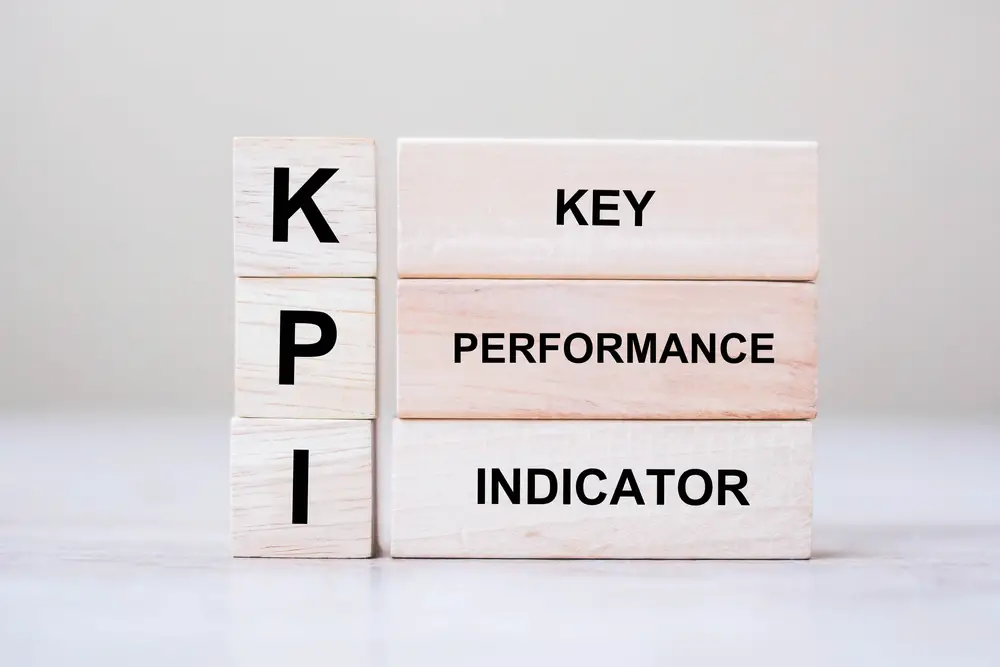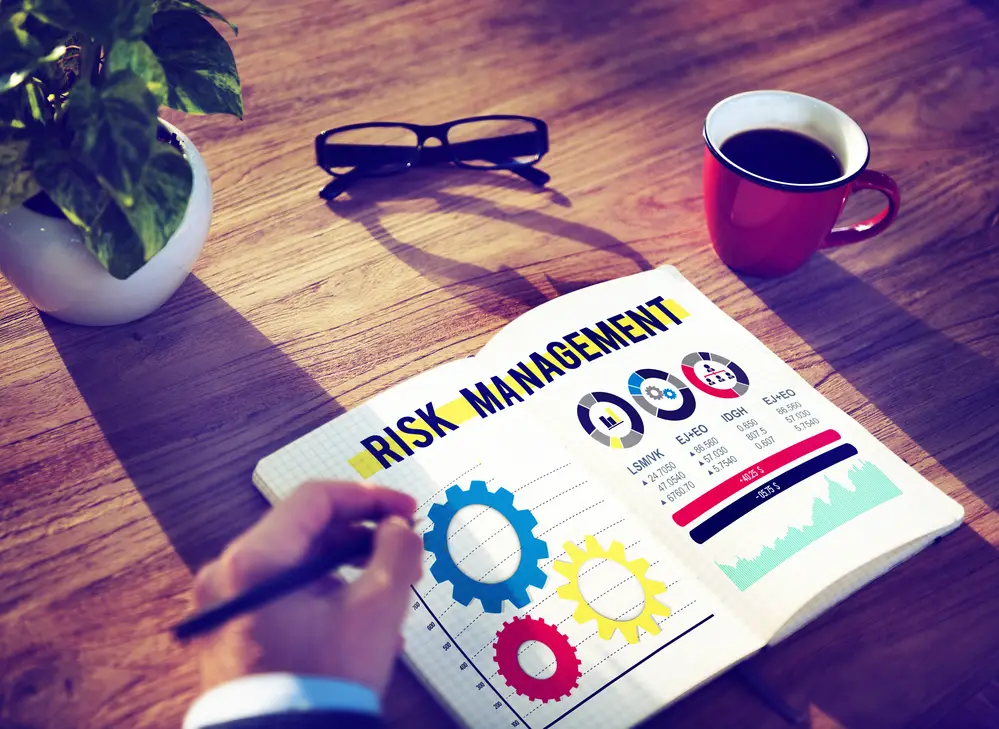Measuring and managing risk is essential for any business. But with the ever-changing landscape of the business world, it can be difficult to know what risks to focus on. That’s where strategic key risk indicators (SKRIs) come in. SSRIs are simply a way to measure the risk that is specific to your company and your industry.
Strategic key risk indicators (SKRIs) are a way to measure the risk that is specific to your company and your industry.
SSRIs are most commonly used in two ways: as early warning signs of potential problems and as ongoing performance measures. As early warning signs, SKRIs can help you identify potential risks before they become full-blown crises.
For example, if you notice that one of your SKRIs is trending in the wrong direction, you can take steps to mitigate the risk before it becomes a more serious problem. Conversely, if you see that a particular SKRI consistently outperforms expectations, you may want to invest more resources in that area to capitalize on the opportunity.
Countless factors could be considered as SKRIs for any given company. Choosing indicators specific to your company and industry is the most important thing. With that said, here are a few examples of SKRIs that could be used in a variety of businesses:
- Revenue growth or decline
- Employee turnover
- Customer satisfaction
- Market share
- Safety incidents
- Environmental violations
- Regulatory compliance
Risk management, compliance, and internal audit specialists understand how companies manage risks effectively. The risk assessment process must be iterative/dynamic. The auditing profession must revisit risks, modify its response to risks as a whole, and adjust to changing and complex circumstances.
To better prepare your business against emerging threats and improve its overall performance, you must have key risks indicators (KRIs) developed with you.
Strategic key risk indicators (KRI) help organizations understand and mitigate potential risks to their business. But what are KRIs, and how can they be used effectively? This blog post will provide examples of strategic KRIs and explain why they are important for businesses.

What are Key Risk Indicators?
Risk indicators indicate the likelihood that a particular event may negatively affect an organization. By setting up KRIs, businesses are given a chance to quantify risk and monitor it. This gives an insight into the organizational security environment & management processes.
The answer isn’t necessarily right. Ensure the number of risks identified and the nature of the risk identified. Leaders must consider knowledge about KRIs and their impact on business operations in the workplace.
Purpose of Key Risk Indicators
Key risk indicators provide insights into an organization’s performance concerning specific risks and identify potential improvement areas.
Each key risk indicator will have a different purpose, depending on the organization’s risk management strategy. However, some common purposes include:
– Monitoring overall risk exposure
– Detecting early warning signs of potential problems
– Identifying areas where corrective action is required
– Measuring the effectiveness of risk management processes
KRIs help to enhance operational risk management and provide essential risk management roles. Kris forecasts potential risks — specifically in highly-risk zones. KRIs offer advanced “head up,” which helps companies be aware of risks in their business.
Best ways to identify key risk indicators for your business
Tips on how to identify and assess strategic key risk indicators include:
1. Establishing a clear risk management framework and methodology that can be used to systematically assess risks and their potential impacts on the business.
2. Identifying key areas of the business that are most important to the organization’s success and assessing the risks associated with those areas.
3. Conduct a regular risk assessment process that reviews all known or potential risks facing the business, including internal and external risks.
4. Utilizing risk intelligence information (e.g., early warnings, risk indicators, and monitoring) to identify emerging risks that may significantly impact the business.
5. Communicate regularly with key stakeholders about the organization’s risk management process, including the strategic key risk indicators used and the rationale behind their selection.
6. Collaborating with key partners such as regulators, suppliers, and customers to ensure that strategic key risk indicators are aligned with their needs and goals.
7. Continually monitor strategic key risk indicators to identify changes in the business environment or emerging risks that may significantly impact the organization.
Before you develop a KRI, you must know how to identify and mitigate potential threats. Key risk management involves determining the biggest threats. These risks have the greatest potential to exist, have the strongest impact, and are outside your company’s control.
It helps to determine key performance indicators (KPI) by simply identifying the desired metrics and then creating the appropriate KRI in the KPI. The KPIs represent the things that matter the least. This reduces the time spent on the identification of crucial business functions.

Challenges of Developing Key Risk Indicators
One challenge in developing key risk indicators is that different organizations may have different interpretations of what constitutes a key risk. Another challenge is that some risks may be more easily identified than others.
For example, suppose an organization plans to develop a key risk indicator for fraud. One possible way to identify fraud would be to examine financial statements for irregularities. However, not all types of fraud are detectable from financial statements. For example, fraudulent activity could involve falsifying records or the unauthorized alteration of information.
Thus, it can be difficult to develop a comprehensive list of key risk indicators that accurately reflects the risks faced by an organization. Additionally, it can be challenging to ensure that these indicators are updated regularly as risks change.
Others might include:-
1. Determining which factors to include in the analysis.
2. Select appropriate data sources.
3. Developing reliable and valid measurement instruments.
4. Gathering timely and accurate data.
5. Analyzing the data to identify key risk indicators.
6. Disseminating information on key risk indicators to decision-makers promptly
Although KRIs offer several benefits, such as their ability to identify organizational risks, businesses face many challenges when implementing or tracking KRIs. 22% of businesses said finding the proper way of measuring kRIs was their biggest challenge.
Steps to develop Key Risk Indicators
1.Define the business context and objectives.
As part of developing key risk indicators (KRIs), it is important to define the business context and objectives. The business context includes factors such as the industry, regulatory environment, and competitive landscape.
The objectives should be specific, measurable, achievable, relevant, and time-bound. Once the business context and objectives have been defined, it will be easier to identify the risks that need to be monitored. Kris can then be developed to help measure and track these risks.
2. Review existing risk management policies and procedures.
This will ensure that KRIs are aligned with the organization’s overall risk management strategy. Furthermore, it will help identify gaps in the current policies and procedures. Once these gaps have been identified, they can be addressed as part of the KRI development process.
3. Assess the risks facing the business.
As part of the process of developing key risk indicators (KRIs), businesses need to assess the risks they face. This assessment should consider both the risk’s likelihood and potential impact. Once the risks have been identified, businesses can develop strategies to mitigate or avoid them.
In some cases, this may involve insurance or other financial protection. In other cases, it may involve changes to business processes or procedures.
4. Identify key risk indicators for each type of risk identified in step 3.
To identify potential risk indicators, businesses must first understand the different types of risk that can impact their operations. Financial risks can include anything from interest rate fluctuations to currency devaluations, while operational risks may encompass supply chain disruptions or reputational damage. Significant risks are better key risk indicator examples.
Once the various types of risk have been identified, key risk indicators can be developed for each. For financial risks, indicators might include changes in revenue or profitability, while for operational risks, indicators could relate to employee turnover or customer satisfaction levels.
5. Validate the key risk indicators with senior management and other stakeholders.
This helps to ensure that the indicators are relevant and accurate and that they will be useful in identifying and managing risks. There are several ways to validate key risk indicators, including interviews, focus groups, surveys, and data analysis. Once the indicators have been validated, they can be used to develop risk management strategies and plans.
6. Implement the key risk indicators and track performance over time.
Step 1: Define the purpose of your key risk indicators. What risks will they help you measure? What decisions will they inform? Be as specific as possible.
Step 2: Identify the data sources you will use to calculate your key risk indicators. This step is critical to ensuring the accuracy and usefulness of your indicators. Make sure to consider both internal and external data sources for risk identification.
Step 3: Calculate your key risk indicators. Use the data sources you identified in Step 2 to calculate the current value of each indicator.
Step 4: Track performance over time. Periodically recalculate your key risk indicators to see how they have changed over time. This will help you identify trends and assess the effectiveness of your risk management strategy. This can manage potential risks.

How to design effective KRIs?
Select KRIs
The KRI selection method has 2 primary ways: top-down and bottom-up approaches. If your risk assessment is top-down or bottom-up, the risk can start being assessed. For initial KRIs, it is important to start small. This is a critical task that needs to be accomplished by enterprise risk management program,
There are mainly 2 to 3 indications for your highest risk. Make KRIs easy with a focus on minimizing the risk. Bring in relevant industry experts for the assessment of risk. When identifying an indicator, you will determine upper or lower tolerance levels to match the risk level.
Maintain KRIs over time
Once KRIs are established, they must always be monitored in real-time and periodically inspected in real-time and annually. Automating this procedure could improve efficiency, but perhaps appoint key people to track specific indicators manually, as they are relevant to your organization.
You can use this data-gathering period to verify your risk threshold setting. Therefore, future alert settings should be properly configured. The risk of a KRI being compromised should be documented and reported.
What are Examples of Key Risk Indicators?
Some KRI’s are specifically aimed at financial or human resource operations, operation, and technical aspects of business activities.
Technological KRIs
The technology-added KRI measures the performance of its systems in the event a security breach occurs. These types of KRIs can affect any industry, although they are more relevant in an enterprise technology provider that relies heavily on web portals.
Technical hazards could also be higher operational complexity, security concerns, protocol changes, or rules. There is an important distinction between KIs and KPIs. They may be similar but different. Together, these two organizations supply companies and leaders with data that can improve businesses’ performance.
Financial KRIs
Quantitative financial reporting (KRIs) may prove to be more useful for commercial or retail banking institutions, assets managers or companies, or Certified Public Accountants or CPAs.
Those financial KRIs whose external environment has an important impact on determining monetary policy may include those measuring an economic downturn or regulation changes as examples. The external factor is usually a change in strategic goals, budget limits, and acquisition of assets.
Qualitative KRIs
KRIs are designed for predictive probability-based outcomes that support sensitive research. It may be more relevant if quantitative KRIs have more relevance to a particular company’s business.
Depending upon external environmental influences, certain KRI can be regarded as achieving a higher ranking or being more important. This is an example of the best KRIs used throughout the entire spectrum of industries.
Operational KRIs
Operational kris may have several characteristics, ranging from internal processes to inefficient internal controls. ‘ RIs are commonly developed for any industry. Factors affecting operations for kRIs can involve inefficient processes, leadership changes, and strategic targets.
Human Resources KRIs
HR departments and hiring agencies may also use qualitative KRIs, either quantitatively or qualitatively. High turnover of staff, low employee satisfaction, labor shortage, and poor recruitment conversion rate are examples of human resources KRIs.
Conclusion
Strategic key risk indicators (SKRIs) are essential for measuring and managing risk. In choosing indicators that are specific to your company and monitoring them on an ongoing basis, you can make informed decisions about the future of your business.

Chris Ekai is a Risk Management expert with over 10 years of experience in the field. He has a Master’s(MSc) degree in Risk Management from University of Portsmouth and is a CPA and Finance professional. He currently works as a Content Manager at Risk Publishing, writing about Enterprise Risk Management, Business Continuity Management and Project Management.

